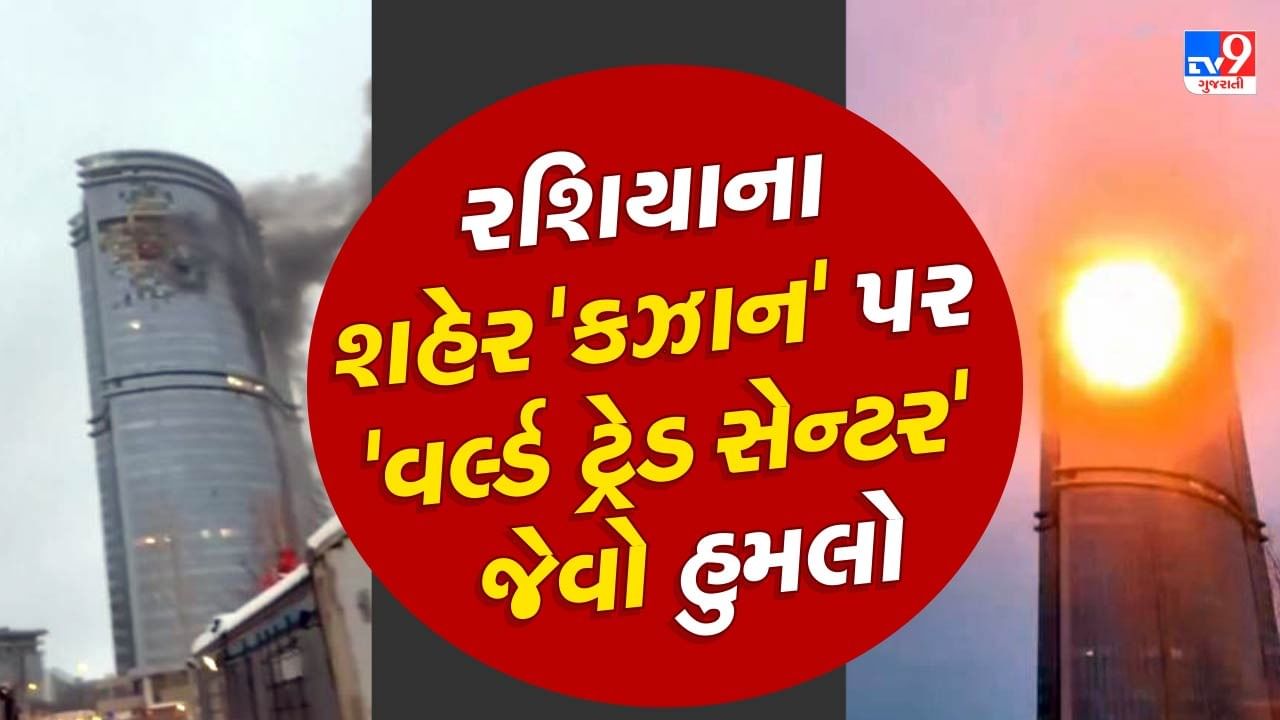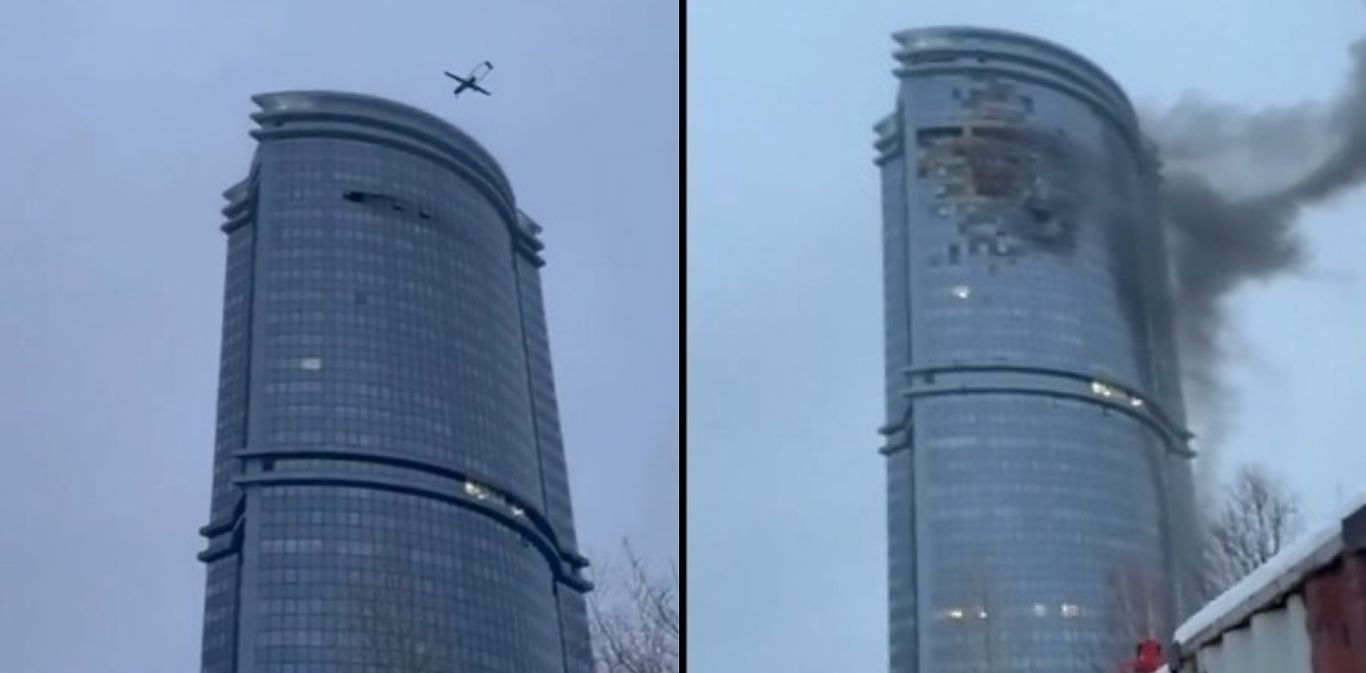Kazan drone attack: The alleged drone incident in Kazan has sparked international intrigue and raised crucial questions about attribution, geopolitical motivations, and the evolving nature of drone warfare. This incident, shrouded in uncertainty, demands a careful examination of the circumstances, potential actors, and the technological implications of such an attack. Understanding this event requires analyzing the reported damage, the response of authorities, and the broader geopolitical context of Kazan’s strategic location within Russia.
The timeline of events, from initial reports to ongoing investigations, is crucial in piecing together a comprehensive understanding. Analyzing the alleged methods used, comparing them to similar incidents globally, and assessing the challenges in definitively assigning responsibility are all vital steps. This investigation will explore these aspects, examining the technological capabilities of the drones involved and the potential motivations behind the attack, considering regional tensions and existing conflicts.
The recent drone attack on Kazan highlights the vulnerability of civilian infrastructure to unmanned aerial vehicles. Incidents like this underscore the importance of robust drone safety protocols, as evidenced by the issues encountered in a similar, albeit less destructive, context with the orlando drone show malfunction , which exposed potential flaws in coordination and control systems. Ultimately, both events emphasize the need for improved drone technology and regulation to prevent future incidents.
The Kazan Drone Attack: An Analysis
Reports of a drone attack in Kazan, Russia, have raised significant concerns regarding regional security and the escalating use of unmanned aerial vehicles (UAVs) in conflict zones. This analysis examines the event, its potential implications, and the broader geopolitical context surrounding it. The lack of definitive information necessitates a careful consideration of various perspectives and potential scenarios.
The Event: Kazan Drone Attack Overview
Allegations of a drone attack targeting Kazan emerged on [Insert Date], sparking immediate investigations and heightened security concerns. While official details remain limited, reports suggest [brief description of the alleged attack, e.g., multiple drones targeting a specific location]. The incident reportedly caused [description of reported damage, e.g., minor property damage], with no confirmed casualties reported at this time.
Initial reports surfaced on social media, followed by cautious statements from local authorities. Further updates and official confirmations are awaited.
| Date | Time | Location | Reported Damage |
|---|---|---|---|
| [Insert Date] | [Insert Time] | [Insert Specific Location in Kazan] | [Insert Detailed Description of Damage] |
Attribution and Responsibility
Determining responsibility for the alleged attack presents significant challenges. Several potential actors could be considered, including [list potential actors, e.g., nationalist groups, foreign powers, or individuals]. The methods employed, [describe alleged methods, e.g., the type of drones used and their flight paths], suggest a degree of planning and sophistication, although further investigation is needed to confirm these aspects.
This incident shares similarities with other drone attacks observed in [mention similar incidents and locations], highlighting a growing trend in the use of UAVs for targeted attacks.
Geopolitical Context

Kazan, the capital of Tatarstan, holds significant geopolitical importance due to its strategic location and economic role within Russia. The region’s unique cultural and political dynamics, coupled with [mention current political climate in the region, e.g., existing tensions between the central government and regional authorities], could be relevant to the incident. Potential motivations for such an attack could include [mention potential motivations, e.g., protesting government policies, demonstrating capabilities, or destabilizing the region].
The recent drone attack on Kazan has raised concerns about escalating tensions in the region. This incident follows a pattern of similar attacks, prompting comparisons to the ongoing conflict, as seen in reports detailing ukraine drone attack on russia , which similarly highlight the increasing use of unmanned aerial vehicles in modern warfare. Ultimately, the Kazan attack underscores the need for de-escalation and a comprehensive understanding of the evolving tactics in these conflicts.
Any existing conflicts or disputes within the region, or between Russia and neighboring countries, should also be considered.
Technological Aspects
Reports suggest the alleged attack involved [describe type of drones, e.g., small, commercially available drones modified for military purposes]. The sophistication of the technology used, including [mention specific technological aspects, e.g., flight control systems, payload capacity, and range], is crucial in assessing the capabilities of the perpetrators. The ability to employ drones for attacks highlights the accessibility of this technology and its potential for misuse.
A hypothetical scenario could involve a swarm of smaller, less sophisticated drones overwhelming security systems, or a single, larger drone carrying a more substantial payload.
Response and Aftermath, Kazan drone attack

Local authorities and emergency services responded swiftly to the incident, [describe the response, e.g., securing the area, launching an investigation, and increasing security measures]. Investigations are underway to determine the full extent of the attack, identify those responsible, and prevent future incidents. Security measures implemented following the event likely include [mention security measures, e.g., enhanced surveillance, drone detection systems, and stricter regulations].
- Short-term consequences: Increased security measures, public anxiety.
- Long-term consequences: Potential for heightened regional tensions, stricter drone regulations.
Public Reaction and Media Coverage

Public reaction to the alleged attack has been varied, ranging from [mention public reactions, e.g., concern and fear to skepticism and anger]. Media coverage has been extensive, with [mention different media outlets and their perspectives]. Variations in reporting reflect differing access to information and potential biases. The overall narrative presented by the media largely focuses on [mention the main themes in media coverage, e.g., the security implications and the need for a robust response].
Illustrative Example: A Hypothetical Drone Trajectory
Imagine a drone taking off from [hypothetical location outside Kazan], flying at a low altitude of approximately [altitude] meters to avoid detection. The drone follows a pre-programmed route, utilizing [describe navigation methods, e.g., GPS and inertial navigation systems], to approach its target, [hypothetical target location]. It navigates around obstacles such as buildings and trees, using [describe maneuvering capabilities, e.g., advanced obstacle avoidance systems], before reaching its final destination and deploying its payload.
The recent drone attack on Kazan highlights the escalating concerns surrounding the misuse of unmanned aerial vehicles. This incident, while geographically distant, shares similarities with other drone-related mishaps; for instance, the consequences of a malfunction, as seen in a recent florida drone accident , underscore the importance of robust safety regulations and technological advancements to mitigate risks. Ultimately, the Kazan incident serves as a stark reminder of the potential for both deliberate and accidental harm from drones.
The entire flight would likely take [estimated flight time], with the drone maintaining an average speed of [estimated speed] km/h. The surrounding environment, characterized by [describe environment, e.g., dense urban areas, rivers, and open spaces], would influence the drone’s trajectory and flight profile.
The Kazan drone attack serves as a stark reminder of the evolving landscape of modern warfare and the potential for drone technology to be utilized in acts of aggression. The incident’s ambiguity highlights the challenges in attributing responsibility, investigating complex events, and understanding the broader geopolitical implications. While questions remain unanswered, a thorough investigation into the circumstances, technological aspects, and geopolitical context is vital to prevent future incidents and enhance security measures.
The incident underscores the need for continued vigilance and international cooperation in addressing the growing threat of drone-based attacks.
Q&A: Kazan Drone Attack
What is the current status of the investigation into the Kazan drone attack?
The details of the ongoing investigation are often limited to official statements, which may be sparse. Further information may emerge over time as investigations progress.
What security measures have been implemented in Kazan following the attack?
Specific security measures are likely to remain confidential for security reasons. However, it’s plausible that increased surveillance and potential airspace restrictions have been implemented.
What are the potential long-term consequences of this attack?
Long-term consequences could include heightened security measures, increased regional tensions, and potential shifts in geopolitical dynamics, depending on the outcome of the investigation and any subsequent actions.